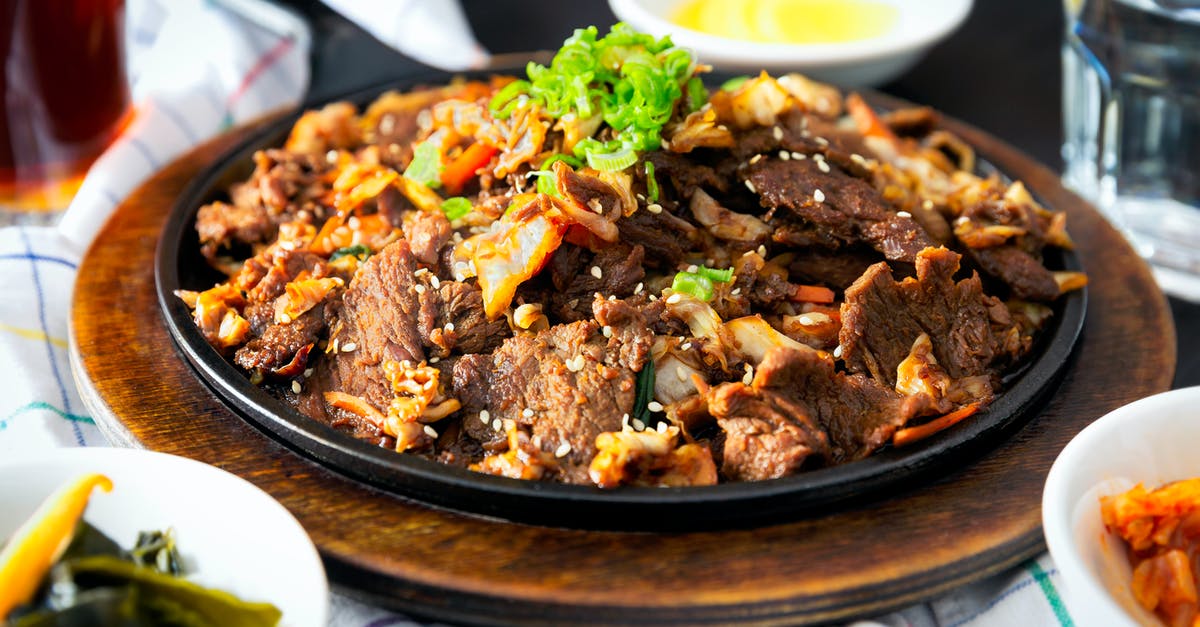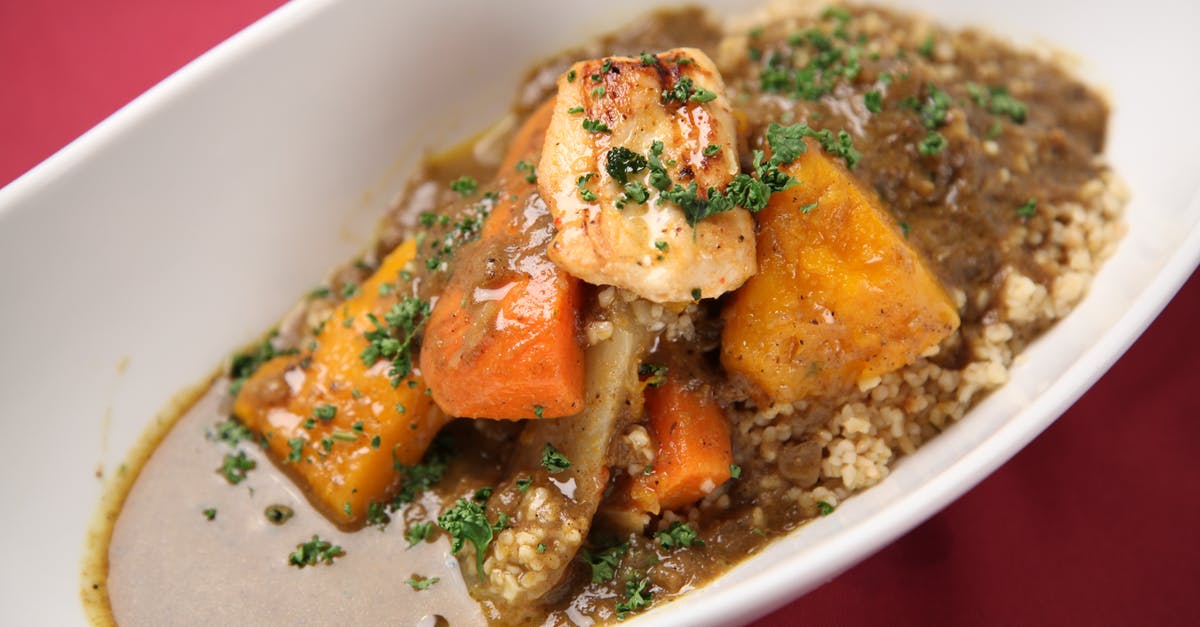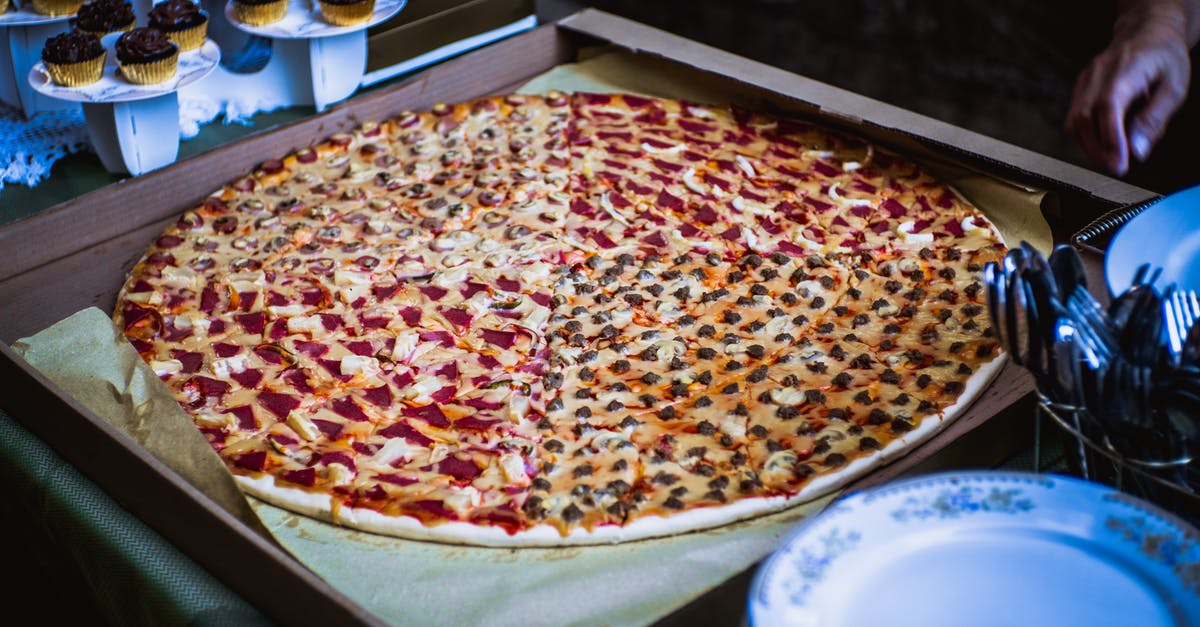Cooking time adjustment for large quantities of stew

First off a little backgound: I am a member of a cooking club in my local village center. We have a reasonably well fitted kitchen, but the logistics of cooking in it for 20 people are always a bit tricky. We start at 17:30 and our menus always consist of an amuse, 2 starters, a main and a dessert. The aim is to serve the main between 21:00 and 21:30.
For this question, please assume that the oven is always taken for a different dish, so the stew has to be prepared from start to finish in a large pan.
We have often found that we fail to get stews cooked in time for serving. I am aware of the following factors that will increase the total time from start of prep to serving:
- It takes a long time to prepare and brown 20 portions of meat before adding it to the stewing liquid
- It takes longer for the stewing liquid to get to simmering temperature because of the higher volume
Even when taking these factors into account, there seems to be a sizeable difference between the cooking times we are used to when cooking 4 to 6 portions and the time it takes for the big pan for 20 portions.
We have a theory that this might be due to a temperature gradient between the bottom and top of the pan, but I don't know if this makes any sense.
Can anyone come up with something resembling a formula to adjust our cooking times in this situation? It might help us decide which dishes are (not) feasible to cook in the available time.
Best Answer
Normally, cooking a stew (not counting prep) in less than a three hours seems like rushing it to me. I can't imagine that you'd ever get the fall-apart tender meat that people expect from a stew, but...
There are a number of techniques that I've seen professional cooks use when they're in a time crunch that may help you overcome time constraint problems such as this one:
- Cut the ingredients into smaller pieces
- Use larger bottomed or multiple pans (even electric ones as mentioned in the comments)
- Use a deep fryer (not recommended for a stew ;-), though it would certainly help get the meat up to temperature)
- Use a microwave (works well for some ingredients, not so much for others)
- Use a pressure cooker (if available, this is what I would recommend for a stew)
From a scientific perspective, it's going to take 5 times as much energy to bring 20 portions worth of ingredients to temperature as it would 4 portions. Coming up with an exact formula would require some detailed information such as the BTUs put out by the stove, the spread of the burner, and surface area, shape, and material of the pan being used, etc. However, we do know that a lower portion of the energy will be lost when cooking 20 portions due to more surface area of the pan being in contact with the ingredients (even if only on the sides). I would guess that the wasted energy probably ranges from 50% if you're cooking small portions to 20% if you're cooking large portions (again, depending on the efficiency of your cooking arrangement, which will vary widely).
So, if F is the energy required to bring 4 portions of the food to temperature, and S is the energy per time unit put out by the stove, and t1 is the time required to bring 4 portions up to cooking temperature, and we guess that we have 50% efficiency when cooking 4 portions, we have F=.5*S*t1. When we increase to 20 portions, assuming the efficiency increases to 80%, we'd have 5F=.8*S*t2. Solving for t2 relative to t1, we get t2=5*.5*S*t1/(.8*S), or t2=3.125*t1, so (given the assumptions of course), bringing 20 portions up to cooking temperature would take 3.125 times as long as bringing 4 portions up to temperature. To speed things up, you would have to alter the input energy (more burners, electric assistance, etc.), or increase the efficiency (more pan surface area, smaller cut ingredients). A more general equation would be t=M*Eb*tb/(Mb*E) with tb, Mb, and Eb being the time to cook a baseline amount, its mass, and the efficiency for that volume, and t, M, and E being the time for the new amount, its mass, and its efficiency.
Of course this is just the time to bring the ingredients up to cooking temperature. Once there, the volume of ingredients doesn't matter much unless there is a lack of convection due to the thickness during the cooking phase, so with more portions you may need to stir more (this would be the solution to the gradient problem). After coming to cooking temperature, adding energy faster or more efficiently won't help much (if at all), but changing the pressure will change how quickly the food cooks, which is why this is what I would recommend. The cooking phase is the majority of the time, so a 10% savings there will save you more than a 10% savings during the 'coming up to temperature' phase. Depending on the stew, you may or may not need some time at the end for reduction and thickening as well.
In addition to all this, if you're doing prep work during the time you've listed, I'd skip the mise en place and get whatever you can heating up immediately so you can get as much heat as possible into as much of the stew as possible as quickly as possible.
Pictures about "Cooking time adjustment for large quantities of stew"



Is stew better the longer it cooks?
Wrong! Stew is the ideal time to skip the lean, pricier cuts of meat and go for the less expensive, tougher cuts. The long, slow cook time leaves lean meat, like sirloin, tough and chewy, while tougher cuts, like chuck, break down and become really tender. Follow this tip: Stick with using chuck meat.How long should you cook stewing beef for?
Cook over medium-high heat, scraping the pan with a wooden spoon to loosen any browned bits. Add the beef, beef broth and bay leaves. Bring to a boil, then reduce to a slow simmer. Cover and cook, skimming broth from time to time, until the beef is tender, about 1 1/2 hours.How long is too long to cook a stew?
As much as we like the idea of a stew that sits on the stove all day long, too much time will result in dry beef and mushy veggies. It depends on how much stew you're actually making, but the sweet spot is about 2\u20133 hours.How do I adjust cooking times?
How to adjust cooking times for different temperatures.Huge Mistakes Everyone Makes When Cooking Beef Stew
More answers regarding cooking time adjustment for large quantities of stew
Answer 2
I tend to cook my stews for so long, I'm not really sure what the minimum time that it would take to cook ... however, there are some things that you can do:
- Heat up some of the liquid separately, while you're browing the meat. Deglaze with the cold liquid, then top off with the hot liquid to cook.
- Use multiple pots (or pans) to brown the meat. (and you can start the liquid heating while the last batch is browning in the other pan)
- Cut things a little bit smaller (note that this may require more browning time)
- Use a wider pot, not a taller pot. (would minimize the chance of there being an issue with temperature gradients) Or use two pots, rather than just a taller pot.
- If the oven isn't taken when you're starting your prep, you can brown the meat in the oven (using the broiler) ... but don't flour it, instead add a roux if you typically floured your meat.
If you didn't have the oven restriction, I'd also have recommended that you cook it in the oven to completely remove the temperature gradient possibility.
Answer 3
When I prepare stew, it's usually a 3 hr process. Half hour for prep (including browning the meat), and 2 1/2 hours cooking time. I make 5 quarts at a time in my cast iron dutch oven which serves 6 hungry people, or maybe 8 with smaller serving.
I just brown the meat in the bottom of the dutch oven saute style, push them to the sides and saute my onions next, then start dumping in the fluids (I use red wine) and root veg (potatoes, parsnips, turnips) and herbs (oregano, thyme and bay), tossing in carrots an hour before completeion, and celery in 30 minutes before done.
If you increase the volume it takes longer to get to temp, but once it's to temp cooking time is the same regardless of volume. Perhaps you could split this into 3x 5 quart preperations or 2x 7 quart preperations. 7 quarts I would SWAG take an additional 5 minutes to bring to boil. Once there you bring it back down to a light simmer and would take the normal 2 1/2 hours (time obviously depending heavily on your recipe and intended outcome)
I know I just gave you mostly a recipe, but that wasn't my intention, just letting you know how I make my stew so you can perhaps adjust your order of operations. Minimize the number of pans (even though you would still need 2 or 3 pots or dutch ovens), and get it cooked quickly yet completely and so deliciously.
Sources: Stack Exchange - This article follows the attribution requirements of Stack Exchange and is licensed under CC BY-SA 3.0.
Images: SenuScape, Timur Saglambilek, Naim Benjelloun, Nico Honasan
